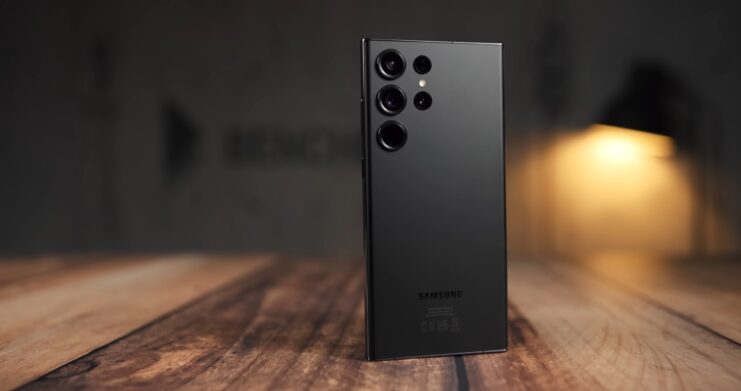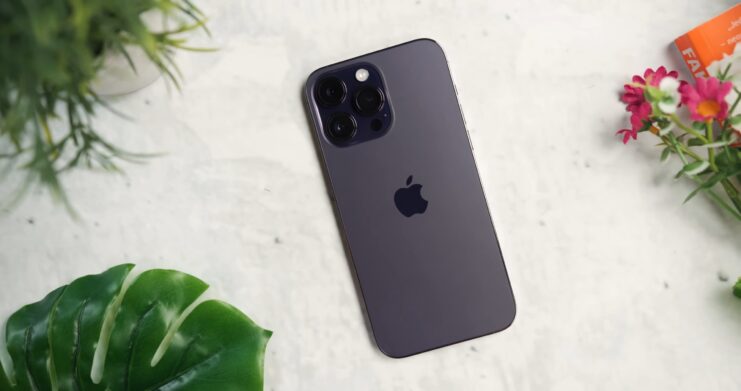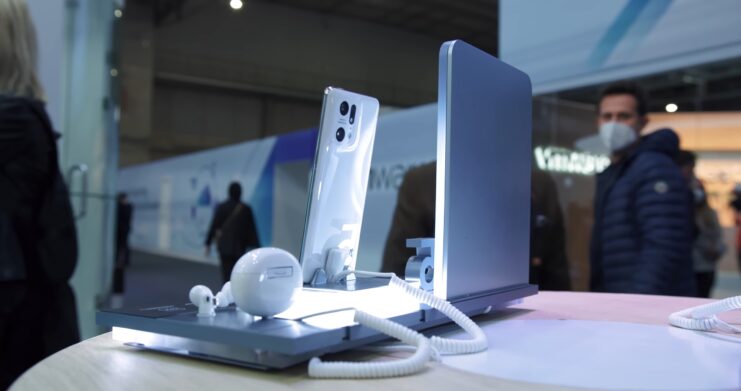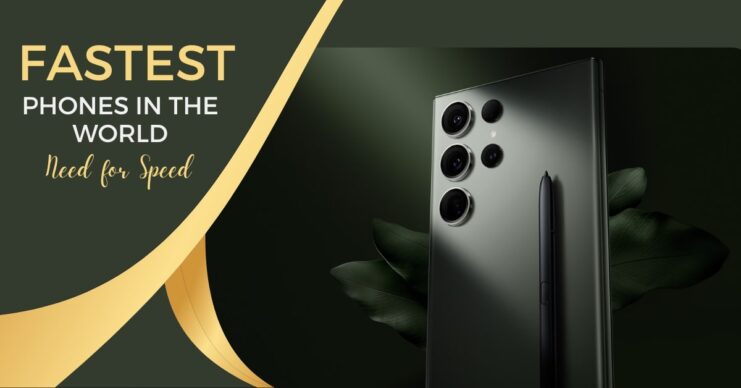Modern technology has advanced to the point that the market is flooded with superb cellphones that provide each user access to capabilities that were unthinkable twenty years ago.
The question is, which are the best of the best? Today, we’ll discuss this topic and the world’s quickest cell phones.
Modern smartphones serve as all-encompassing devices, so it is crucial that they complete duties as quickly as possible. There is no denying that the recently announced smartphones are tremendously speedy and that they have some jaw-droppingly impressive features.
The quickest models of Apple and Android cellphones will be the main topic of this post. There is a lot to discuss, so let’s get started right away.
1. Samsung Galaxy S23 Ultra

The Galaxy S23 Ultra is your finest phone option if you’re an Android user. The screen on this phone is an upgraded, next-generation Dynamic OLED that can break records by peaking at 1750 nits of brightness. When necessary, the LTPO OLED panel can transition between 1 Hz and 120 Hz to preserve battery life while still displaying fluid animations.
The powerful S Pen stylus, which the iPhone lacks, is another feature exclusive to the Galaxy S23 Ultra. The S23 Ultra is a champion of productivity as a result of this tiny pen. Because it is so sensitive and has its own slot inside the phone, you may also use it to draw and write.
- Battery life is great, big improvement from predecessor
- New Snapdragon chip is the best one in years
- Design is improved, feels more ergonomic
- Screen is less curved and gets very dim (perfect for night time use)
- Camera improvements are there, but not quite huge
- Loudspeakers sound much better now
- You get double the storage (256GB) at base model
- Base model still only has 8GB RAM
- Charging speeds have not improved
- Haptics are still not as good as rivals
- Camera system hasn’t improved as much as hoped for
- Expensive if you buy at full price
Samsung Galaxy S23 Ultra specs at a glance:
- Body: 163.4×78.1×8.9mm, 234g; Glass front (Gorilla Glass Victus 2), glass back (Gorilla Glass Victus 2), aluminum frame; IP68 dust/water resistant (up to 1.5m for 30 mins).
- Display: 6.80″ Dynamic AMOLED 2X, 120Hz, HDR10+, 1750 nits (peak), 1440x3088px resolution, 19.3:9 aspect ratio, 501ppi; Always-on display.
- Chipset: Qualcomm SM8550-AC Snapdragon 8 Gen 2 (4 nm): Octa-core (1×3.36 GHz Cortex-X3 & 2×2.8 GHz Cortex-A715 & 2×2.8 GHz Cortex-A710 & 3×2.0 GHz Cortex-A510); Adreno 740.
- Memory: 256GB 8GB RAM, 256GB 12GB RAM, 512GB 12GB RAM, 1TB 12GB RAM; UFS 4.0.
- OS/Software: Android 13, One UI 5.1.
- Rear camera: Wide (main): 200 MP, f/1.7, 24mm, 1/1.3″, 0.6µm, multi-directional PDAF, Laser AF, OIS; Telephoto: 10 MP, f/2.4, 70mm, 1/3.52″, 1.12µm, Dual Pixel PDAF, OIS, 3x optical zoom; Telephoto: 10 MP, f/4.9, 230mm, 1/3.52″, 1.12µm, Dual Pixel PDAF, OIS, 10x optical zoom; Ultra wide angle: 12 MP, f/2.2, 13mm, 120˚, 1/2.55″, 1.4µm, Dual Pixel PDAF, Super Steady video.
- Front camera: 12 MP, f/2.2, 26mm (wide), Dual Pixel PDAF.
- Video capture: Rear camera: 8K@24/30fps, 4K@30/60fps, 1080p@30/60/240fps, 720p@960fps, HDR10+, stereo sound rec., gyro-EIS; Front camera: 4K@30/60fps, 1080p@30fps.
- Battery: 5000mAh; 45W wired, PD3.0, 65% in 30 min (advertised), Wireless (Qi/PMA), 4.5W reverse wireless.
- Misc: Fingerprint reader (under display, ultrasonic); Stylus (Bluetooth integration, accelerometer, gyro); NFC; stereo speakers; Samsung DeX, Samsung Wireless DeX, Bixby natural language commands and dictation, Samsung Pay (Visa, MasterCard certified), Ultra Wideband (UWB) support.
2. iPhone 14 Pro Max

It is not surprising that the most recent offering from Apple is at the top of our list. The very best purchase you could make right now is this smartphone if you love iPhones and want quick performance.
This phone was one of the first iPhones to ditch the notch in favor of Dynamic Island when it was unveiled in late 2024. A never-off display and other outstanding features, like improved cameras, were also introduced by Apple.
More than just a hardware and software collaboration, Dynamic Island enhances the user experience, which speaks volumes about the progress this paradigm has made. Despite the fact that these new functions consume more battery life, the greater battery size means that this is not a major issue.
The 6.7-inch screen on this phone is another nice upgrade, and it appears nicer than the one on the previous model. The bottom line is that even though this phone is an expensive option, it delivers a ton of fascinating features as well as superb and quick performance, making it deserving of the top spot on our list.
- Exceptional, industry-leading performance
- Dynamic Island is a fun and useful twist on the punch hole
- Very good battery life
- Superb video-recording quality
- Very bright and beautiful display with Always-On functionality
- Premium, posh design
- Relatively slow charging speed
- Small evolutionary improvements
- Lack of physical SIM feels like an inconvenience
Apple iPhone 14 Pro Max specs at a glance:
- Body: 160.7×77.6×7.9mm, 240g; Glass front (Corning-made glass), glass back (Corning-made glass), stainless steel frame; IP68 dust/water resistant (up to 6m for 30 mins).
- Display: 6.70″ LTPO Super Retina XDR OLED, 120Hz, HDR10, Dolby Vision, 1000 nits (typ), 2000 nits (HBM), 1290x2796px resolution, 19.5:9 aspect ratio, 460ppi; Always-On display.
- Chipset: Apple A16 Bionic (4 nm): Hexa-core (2×3.46 GHz Everest + 4×2.02 GHz Sawtooth); Apple GPU (5-core graphics).
- Memory: 128GB 6GB RAM, 256GB 6GB RAM, 512GB 6GB RAM, 1TB 6GB RAM; NVMe.
- OS/Software: iOS 16.
- Rear camera: Wide (main): 48 MP, f/1.8, 24mm, 1/1.28″, 1.22µm, dual pixel PDAF, sensor-shift OIS; Telephoto: 12 MP, f/2.8, 77mm, 1/3.5″, PDAF, OIS, 3x optical zoom; Ultra wide angle: 12 MP, f/2.2, 13mm, 120˚, 1/2.55″, 1.4µm, dual pixel PDAF; Depth: TOF 3D LiDAR scanner.
- Front camera: Wide (main): 12 MP, f/1.9, 23mm, 1/3.6″, PDAF, OIS (unconfirmed); Depth: SL 3D.
- Video capture: Rear camera: 4K@24/25/30/60fps, 1080p@25/30/60/120/240fps, 10-bit HDR, Dolby Vision HDR (up to 60fps), ProRes, Cinematic mode (4K@24/30fps), stereo sound rec; Front camera: 4K@24/25/30/60fps, 1080p@25/30/60/120fps, gyro-EIS.
- Battery: 4323mAh; Fast charging, USB Power Delivery 2.0, MagSafe fast wireless charging 15W, Qi wireless charging 7.5W.
- Misc: Face ID, accelerometer, gyro, proximity, compass, barometer; NFC; stereo speakers; Ultra Wideband (UWB) support, Emergency SOS via satellite (SMS sending/receiving);, Apple Pay (Visa, MasterCard, AMEX certified).
3. Google Pixel 7 Pro
![]()
One of the top products released by the company this year is the Google Pixel 7 Pro. In terms of performance and bold, distinctive design, which is a genuine breath of fresh air in the phone industry, Google obviously went to great lengths with this one.
This phone has wonderful cameras that are quite simple to operate and produce stunning images no matter the lighting situation. Tensor G2, Google’s second-generation CPU, is what makes this phone run so well and operate so quickly.
Although the metal surface can scratch easily and perhaps needs to be more durable, the entire cost of this device makes it unquestionably a very competitive model on the market today. The Google Pixel 7 Pro is a great alternative for anyone looking for a fast phone that isn’t an iPhone or a Samsung because it has amazing speed and a ton of fun features. A truly excellent substitute.
- Great deal at $900
- Speedy performance, clean software
- Powerful zoom camera
- Guaranteed day 1 software updates
- Portrait Mode is bad
- Tensor G2 is not as powerful as rivals
- Slow-ish charging
Google Pixel 7 Pro specs at a glance:
- Body: 162.9×76.6×8.9mm, 212g; Glass front (Gorilla Glass Victus), glass back (Gorilla Glass Victus), aluminum frame; IP68 dust/water resistant (up to 1.5m for 30 mins).
- Display: 6.7″ LTPO AMOLED, 120Hz, HDR10+, 1000 nits (HBM), 1500 nits (peak), 1440x3120px resolution, 19.5:9 aspect ratio, 512ppi; Always-on display.
- Chipset: Google Tensor G2 (5 nm): Octa-core (2×2.85 GHz Cortex-X1 & 2×2.35 GHz Cortex-A78 & 4×1.80 GHz Cortex-A55); Mali-G710 MC10.
- Memory: 128GB 8GB RAM, 256GB 8GB RAM, 128GB 12GB RAM, 256GB 12GB RAM, 512GB 12GB RAM; UFS 3.1.
- OS/Software: Android 13.
- Rear camera: Wide (main): 50 MP, f/1.9, 25mm, 1/1.31″, 1.2µm, multi-directional PDAF, Laser AF, OIS; Ultra wide angle: 12 MP, f/2.2, 126˚, 1/2.9″, 1.25µm, AF; Telephoto: 48 MP, f/3.5, 120mm, 1/2.55″, 0.7µm, multi-directional PDAF, OIS, 5x optical zoom.
- Front camera: 10.8 MP, f/2.2, 21mm (ultrawide), 1/3.1″, 1.22µm.
- Video capture: Rear camera: 4K@30/60fps, 1080p@30/60/120/240fps; gyro-EIS, OIS, 10-bit HDR; Front camera: 4K@30/60fps, 1080p@30/60fps.
- Battery: 5000mAh; Fast charging 23W, Fast wireless charging 23W, Reverse wireless charging, USB Power Delivery 3.0.
- Misc: Fingerprint reader (under display, optical); NFC; stereo speakers; Ultra Wideband (UWB) support.
4. OnePlus 10 Pro
OnePlus has been making a reputation for itself in the technology industry year after year by providing excellent features at a price that is unquestionably less expensive than the phones we have so far discussed. The OnePlus 10 Pro offers an excellent price-to-feature ratio and blazingly fast processing.
Despite having a powerful processor that operates quickly, this model’s 6.7-inch screen feels like one of its best qualities. The colors and visuals on this screen are incredibly rich and stunning because to the 120 Hz refresh rate.
Given that the battery life is merely average, it is fantastic news that you can charge the phone so quickly. Overall, this is a really quick phone that strikes the ideal mix between price and capabilities. If you want to get a speedy phone but don’t want to spend a fortune doing it, this is a terrific option for you.
- Distinctive design with premium finish.
- Superb 120Hz LTPO2 AMOLED display with granular HRR control and great color-accuracy.
- Competitive battery life.
- 80W SuperVOOC charging speeds are excellent.
- Excellent sustained performance and thermals.
- Reliably good performance from the primary camera.
- No formal IP rating outside US.
- OxygenOS 12 no longer has that OnePlus fan-favorite look and feel.
- Ultra wide is not at the level of last year’s model and also lacks AF or Macro.
- Most games limited to 60Hz refresh rate.
- Front camera and telephoto camera only offer 1080p video recording.
- 80W charger shipped globally is not much faster than 65W charger in the US, and it doesn’t support USB-PD for fast charging your other devices.
OnePlus 10 Pro specs at a glance:
- Body: 163×73.9×8.55mm, 201g; Gorilla Glass 5 back, aluminum frame, ceramic camera cover.
- Display: 6.7″ Fluid AMOLED with LPTO, 1 billion colors, 120Hz, HDR10+, 1440x3216px resolution, 20.1:9 aspect ratio, 525ppi.
- Chipset: Qualcomm SM8450 Snapdragon 8 Gen 1 (4 nm): Octa-core (1×3.00 GHz Cortex-X2 & 3×2.50 GHz Cortex-A710 & 4×1.80 GHz Cortex-A510); Adreno 730.
- Memory: 8GB, 128GB; 12GB, 256GB; LPDDR5, UFS 3.1.
- OS/Software: Android 12, Oxygen OS 12.
- Rear camera: Wide (main): 50 MP Sony IMX 789, f/1.8, 23mm, 1/1.43″, 1.22µm, Muilti-Autofocus: All-Pixel Omni-directional PDAF + LAF + CAF, OIS; Ultra wide angle: 50 MP Samsung ISOCELL JN1, 1/2.76″, f/2.2, 150˚; Telephoto: 8 MP, 1.0µm f/2.4, PDAF, 3.3X optical zoom. OIS.
- Front camera: 32 MP, 26mm (wide), 0.7µm, EIS, fixed focus.
- Video capture: Rear camera: 8K@24fps, 4K@30/60/120fps, 1080p@30/60/240fps, 720p@480fps, EIS; Front camera: 1080p@30fps, 720p@30fps.
- Battery: 5,000mAh; 65W SuperVOOC (80W in Asia), 100% in 34 min (advertised), 50W AirVOOC, 100% in 47 min (advertised), Reverse wireless charging.
- Misc: Fingerprint reader (under display, optical); NFC; flick-detect sensor, front RGB sensor. SLA X-axis linear motor.
5. Oppo Find X5 Pro

The Find X5 Pro is a great alternative if you love Samsung phones but are now unable to buy the newest Galaxy S22. This is a highly quick device that offers top-notch performance throughout.
The Find X5 Pro has a lovely ceramic finish and an exceptionally gorgeous design. It is a phone with a really outstanding camera system and tons of intriguing features. This device, like the OnePlus 10 Pro we just highlighted, features super-fast charging as well as a long-lasting battery.
Although its 50 MP rear camera does not seem like something special when compared to other phones on the list, it does deliver fantastic results.
- Superb 120Hz LTPO2 AMOLED display with granular HRR control and great color accuracy.
- The ceramic back is the most premium and durable material you can get on a phone.
- Main and ultrawide cameras are properly excellent at everything – stills and video, daylight and low light.
- Wide-angle selfie cam is great for group selfies.
- Customizable and feature-rich Color OS 12.1, Android 12.
- Neat features such as 360-degree NFC, and crisp haptic vibration motor.
- At 2x zoom, the tele camera has a reach that’s too short, and it’s also not very good in low-light scenes.
- The display’s maximum brightness is lower than the competition.
- The 80W charger is barely faster than last year’s 65W charger and it doesn’t support USB-PD for fast charging your other devices.
Oppo Find X5 Pro specs at a glance:
- Body: 163.7×73.9×8.5mm, 195g; Glass front (Gorilla Glass Victus), ceramic back or eco leather back, aluminum frame; IP68 dust/water resistant (up to 1.5m for 30 mins).
- Display: 6.70″ LTPO2 AMOLED, 1B colors, 120Hz, HDR10+, BT.2020, 500 nits (typ), 800 nits (HBM), 1300 nits (peak), 1440x3216px resolution, 20:9 aspect ratio, 525ppi.
- Chipset: Qualcomm SM8450 Snapdragon 8 Gen 1 (4 nm): Octa-core (1×3.00 GHz Cortex-X2 & 3×2.50 GHz Cortex-A710 & 4×1.80 GHz Cortex-A510); Adreno 730.
- Memory: 256GB 8GB RAM, 256GB 12GB RAM, 512GB 12GB RAM; UFS 3.1.
- OS/Software: Android 12, ColorOS 12.1.
- Rear camera: Wide (main): 50 MP, f/1.7, 25mm, 1/1.56″, 1.0µm, multi-directional PDAF, OIS (3-axis sensor-shift, 2-axis lens-shift); Ultra wide angle: 50 MP, f/2.2, 15mm, 110˚, 1/1.56″, 1.0µm, multi-directional PDAF; Telephoto: 13 MP, f/2.4, 52mm, 1/3.4″, 2x optical zoom, PDAF.
- Front camera: 32 MP, f/2.4, 21mm (wide), 1/2.74″, 0.8µm.
- Video capture: Rear camera: 4K@30/60fps, 1080p@30/60/240fps; gyro-EIS; HDR, 10‑bit video; Front camera: 1080p@30fps, gyro-EIS.
- Battery: 5000mAh; Fast charging 80W, 50% in 12 min (advertised), Fast wireless charging 50W, 100% in 47 min (advertised), Reverse wireless charging 10W, USB Power Delivery.
- Misc: Fingerprint reader (under display, optical); NFC.
Understanding Mobile Phone Speed
Mobile phone speed is a crucial aspect of modern smartphones, as users increasingly rely on their devices for a variety of tasks, from browsing the web to streaming video and playing games. In order to understand mobile phone speed, it’s important to consider several key factors.
Another important factor in mobile phone speed is the amount of RAM, or Random Access Memory, that the device has. RAM is the temporary storage space that the phone uses to run apps. The more RAM a phone has, the more apps it can run simultaneously without slowing down. Most high-end smartphones today have at least 8GB of RAM, with some models featuring up to 16GB.
Storage is also an important factor in mobile phone speed. Faster storage means faster app loading times and quicker data transfers. Most high-end smartphones use UFS 3.1 storage, which is up to three times faster than traditional storage. Some smartphones also offer expandable storage, allowing users to add additional storage via a microSD card.
Finally, the display is an important factor in mobile phone speed. A high refresh rate display, such as those found on many modern smartphones, can make scrolling and gaming smoother and more responsive.
What Makes Phone Fast?
Mobile phone speed is a critical aspect of modern smartphones. The faster a phone is, the better the user experience, and the more efficiently the device can handle multiple tasks simultaneously. Several factors contribute to a mobile phone’s speed:
- Processor: The processor is the most critical component of a mobile phone, responsible for running all the apps and software. A powerful processor will result in faster app launches, quicker data transfers, and smoother overall performance.
- RAM: RAM, or Random Access Memory, is the temporary storage area that a mobile phone uses to keep apps open and running. The more RAM a phone has, the more apps it can keep open simultaneously without slowing down.
- Storage: The storage of a mobile phone is where all the data is stored, including apps, files, and media. A faster storage device, such as UFS 3.1, will result in quicker app loading times and smoother overall performance.
- Display: The display is another critical component of a mobile phone that can impact speed. A high refresh rate display, such as those found on many modern smartphones, can make scrolling and gaming smoother and more responsive.
- Software Optimization: The software on a mobile phone plays a crucial role in determining its speed. The software needs to be optimized to work seamlessly with the hardware and should be updated regularly to ensure optimal performance.
Frequently Asked Questions
Conclusion
As credible firms consistently keep pushing the envelope and release quicker and faster gadgets with each passing year, it appears that we are living in a golden age of smartphones. Having said that, obtaining the fastest phones is not an issue; but, for some, their price may be.
Our ranking of the world’s quickest phones comes to a close now. We sincerely hope you found our list useful and were able to decide which item to purchase next. Whichever phone you choose from our list and receive that wonderful upgrade will undoubtedly be worth the money, especially if you’re seeking for the world’s fastest.

